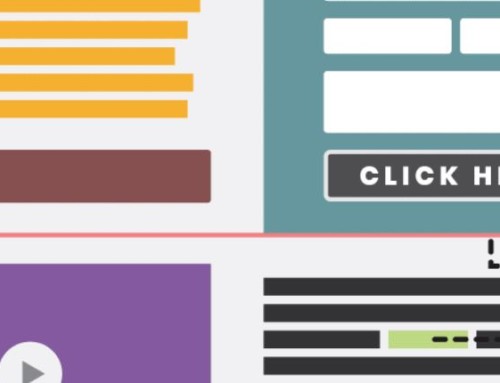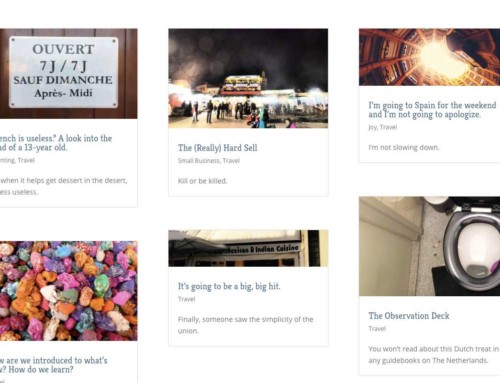You wrote your novel, got a six-figure advance, hired a New York publicist and the royalty checks are now pouring through your mailbox. Right? Great, done. Next! Probably not.
Writers have to do more and more to promote their own work–even established writers. If you want to sell more of your work, you have to become your own little PR company. Editors, publishers, and even (gulp) fans want to see the work you’ve already done, where you’ve been published, where you’ve been doing readings, and what you’re doing next. How are they going to get that information? Your newsletter, your blog, your event calendar, your mailing list, in a word: your website. Here’s a list of ways a writer can use an online presence to help promote their work–and themselves.
1. Website
If it’s not online, it doesn’t exist.
Your website is your brochure, your front desk, your business card, your resume, your calendar, your secretary, your sales force, and possibly your first impression. Make it a good one. Of course, people go to bookstores and talk to their friends, but there’s a good chance they’ll use the web to do a search on “south pacific fiction adventure.” If that’s what you write about, you want to at least exist in the listings they find. Remember, too, that potential book buyers in New Zealand probably aren’t going to get the tip from your local bookstore that your book is such a hottie, but they’ll find you eventually at www.you.com.
Tips & Tricks
- you.com
Ideally, you should be www.firstnamelastname.com. Sure you can buy www.nameofyourbook.com, but make it redirect to your main website. Ideally, you’ll have lots of books and you don’t want people getting lost and confused, keep it simple and consistent. If you just enjoy buying lots of domain names, it’s inexpensive (~ $9/year), it won’t hurt, and it’ll help when the film is coming out … (tip: www.godaddy.com to buy domains and hosting) - [email protected]
[email protected]? [email protected]? Come on. Especially if you run a business, a domain name says something about who you are and how you run things. When the law firm uses [email protected], are you really going to take them seriously? If you use your domain for both business and pleasure, you can use both [email protected] and [email protected]. You’ll get them both. Or better yet, get two domains, one for personal use and one for business use. - Keep it Simple Sally
Don’t use technology for technology’s sake. So yes, you figured how to make hearts rain down the screen on your site like snow. It’s cute the first time (well … ), but don’t go overboard. Make sure it’s easy for visitors to (1) find your book and buy it, (2) find out about upcoming events, (3) learn about your upcoming work, and (4) navigate your site and not get lost. - Send this page to a friend of a friend
Let your fans be your sales force. Make it easy to pass on the buzz about your book with a “Send this to a friend” link. In this way, it saves the visitor from copying and pasting into an email or sending the URL, maybe something he/she wouldn’t take the time to do anyway. But with a simple link and then a simple form to fill out (where it’s going, who it’s from), the word has now been spread. - What to do with 4 cents
It may sound simple, but make sure you have an obvious place where someone can buy your book. You can list several spots (online and brick and mortar) so people can choose between chains and independents and online. If you’re selling through an online site like Amazon, go ahead and get an Associates Account so you get a tiny commission for every book sold through the special link you have on your site.
2.) Blog / Column
What have you done for me lately?
If you think of your website as something to read that’s sitting on a coffee table, is it: (1) a daily newspaper, (2) a weekly news magazine, (3) a monthly glossy, or (4) an annual report? In other words, how often will you be updating your site? If someone visits your site and sees that there is an interesting column that you write about your industry and you write it regularly, chances are good that they’ll return. If they see that nothing has changed since the last, well, century, they probably won’t return anytime soon. Think about it, you don’t read the same magazine over and over.
Tips & Tricks
- Professional or personal?
Be careful not to make your “personal” blog too personal if it’s going to possibly scare away an editor from contacting you. If you want a personal blog, you can keep it separate from your professional site, maybe even a completely different domain name under another pen name. If, however, your unpublished “column” is something that might just be published someday, that lets editors and fans see what you’re up to–and lets them get to know you a bit more. - Try technology
Podcasts, video casts, RSS feeds, and who-knows-what-else are all out there. As mentioned above, don’t go crazy, but do use technology if it makes your visitor experience better in some way: fun, fast, useful, easy, etc. - Not a columnist? Pretend.
A not-yet-published writer wrote “column style” (as opposed to more a less formal journal style) for two years almost every single week of her around the world journey. She showed she had the determination to get the work done every week. Unpaid, thankless, but she did it. Did it land her a job as a columnist at the New York Times? Probably not. Did it improve her writing? Did it help her writing resume? You bet. - Comments anyone?
Blog commenting is often more interesting than the blog itself. If you open your blog/column up to comments, you’re opening up a can of worms–a potentially good can. If people are commenting on your site and you’re responding to their comments and others are commenting some more, that’s officially a discussion. When it keeps going, it’s called interesting. When it’s a place where people are coming back to see what you and others have commented on the comments to the comments, you may have to upgrade your website bandwidth to handle the traffic. Give it a try, see how it goes, you can always turn comments off.
3.) Newsletter / Mailing List
“Hey, I have a new book!” not “Hey, I have a new car.”
A newsletter or mailing list is a fantastic (and inexpensive and often effective) way to keep in touch with your fans and friends and others who sign up to hear about your latest news.
Tips & Tricks
- Frequency meter: occasionally, frequently, obsessive, annoying, call the cops
Be sure not to abuse the fact that people voluntarily signed up to hear from you and don’t bombard them with too much information too often. Don’t think about how much your mother wants to hear about your news, think about how much your neighbor can handle–then cut that in half. - SPAM
Make sure you have an “unsubscribe” option on your mailing list (otherwise, you’re legally a spammer). Be professional about it, in other words, don’t use the “Just email me if you want off my list.” (too personal) but rather have an unsubscribe link where folks can get off–and back on–when they choose. (tip: www.constantcontact.com). - Entice, Lure, Tease?
A good way to generate more traffic to your site is to have a “Read the full story here” link after a paragraph of introduction. This will (1) keep the email shorter, (2) bring them to your website where they (3) might see more topics of interest and possibly (4) buy a book or (5) see your events, etc. Make sure the links are direct so when they want to actually read the rest of the story, it pops right up and they don’t have to do a search on your site to find it again.
4.) Event Calendar
“Oh, I didn’t know you were in town.”
Can a visitor to your site easily figure out when your book tour is coming to their town? Maybe they can sign up for a “notify list” that will automatically inform them when something changes on your calendar (your mother might sign up, your neighbor won’t, but make it an option).
Tips & Tricks
- Calendar for your industry?
If you’re up to the task, you might want to list events that go beyond just your book tour. Are there events of interest in your field that a potential reader of your work might enjoy? Conferences, seminars, events of some interest? Keep it related to your and/or your work unless you’re looking for a research job in the society section of the newspaper–and don’t compete with that section, keep it specific and useful. - Go local, go global
If you’re doing a radio show, chances are that the show will be broadcast online as well. Make a link to the radio site’s archive of your show or, if possible, have the audio file on your site for immediate download. Same goes for video if available.
5.) Press Kit
Save an editor some time–and you some money
Hi-resolution author photo, hi-res book cover image, press releases, clips, and most other parts of a press kit can be put online into a simple downloadable package. This is especially handy if the editor (or publicist etc.) needs it in a hurry. No FedEx, no courier, just go to the site and download it.
Tips & Tricks
- JPG, TIF, PDF, ASAP
If you want to be especially well-liked, make sure you have “friendly” files, e.g. PDF (Acrobat Reader) and not DOC (Word), TIF or JPG photos and not Photoshop files, etc. If you know how, you could put them all together in a compressed file (ZIP).
6.) Photos
Trip to India, not book tour to Indio
If you have intersting photos that are remotely relevant (and ideally, interesting), put some up on the site. As writers, you have mostly words so a few photos can help break up long flows of overwritten prose! This is especially interesting if your topics are something a reader might want to see more of (romance novels would be tough, but adventure travel would be good).
A ballpark on costs
If you’re paying more, you should be paying less.
- Domain $10/year or less
- Hosting From $5/month (basic) to $40/month (major features: credit card transactions, shopping cards, etc.
- Blog From free (www.blogger.com) to $5-$15/month (www.typepad.com)
- Mailing Lists/Newsletter From free (PHP List, DADA Mail) to $25+/month (Constant Contact)
- Forum Free (www.phpbb.com); if you have a decent hosting package, you can install it on your own servers; usually need an SQL database; installation can be tricky
- Email Included in your hosting package; you shouldn’t pay extra for forwarding or additional email accounts e.g. [email protected]
- ISP Dial-up around $10/month, DSL around $30/month, cable $40-$50/month






If you are using AOL Email and your mail is not working properly and you are not working properly and lots of works are pending so don`t worry just call us on our toll-free AOL Phone Number 1-844-205-0712 then our AOL Experts will solve all your problem. You can call us anytime from anywhere we are always available for our values.